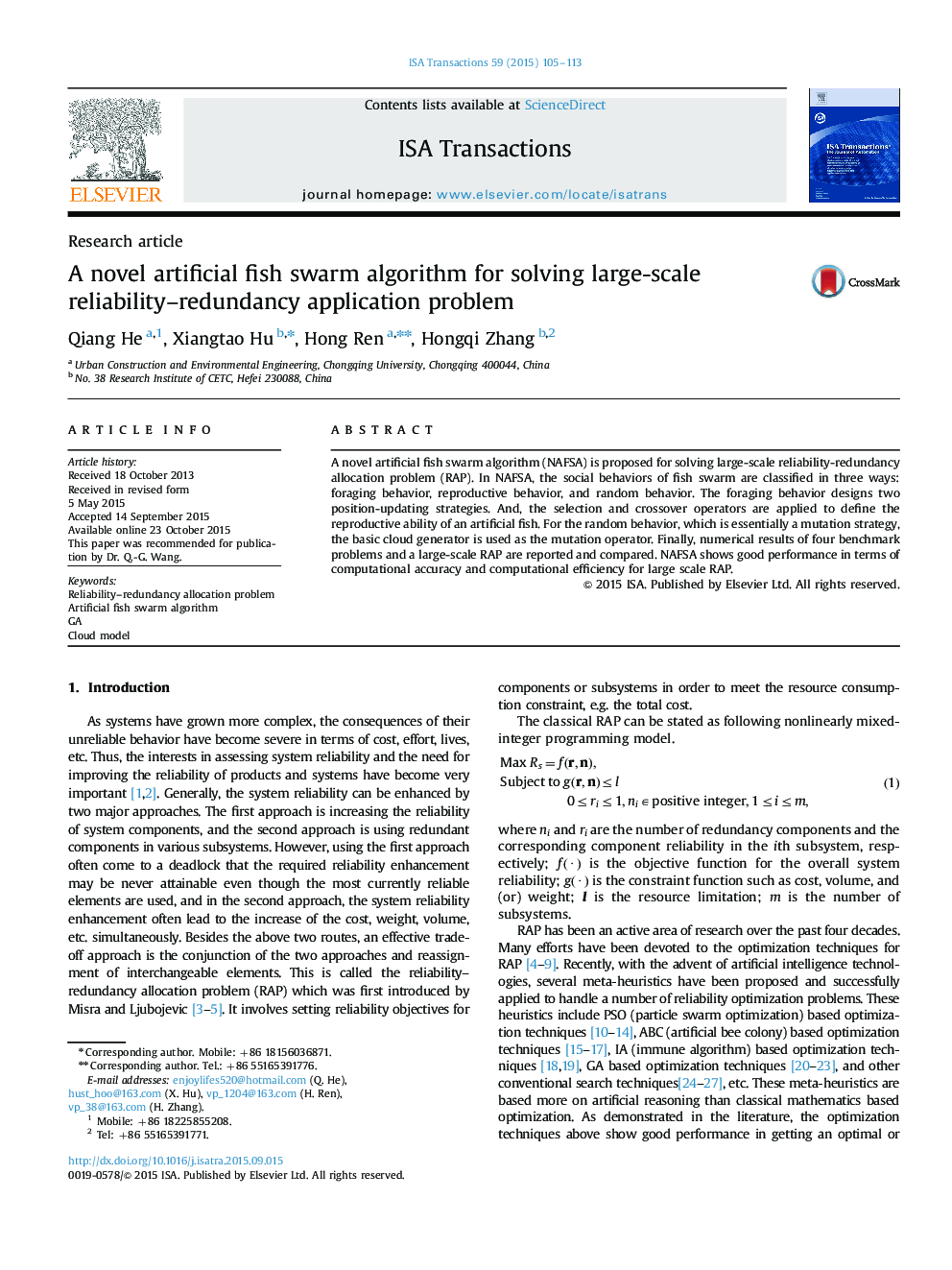| Article ID | Journal | Published Year | Pages | File Type |
|---|---|---|---|---|
| 5004371 | ISA Transactions | 2015 | 9 Pages |
â¢We design three kinds of artificial fish behaviors.â¢We apply two position-updating strategies to define the foraging behavior.â¢We apply the selection and crossover operators to define the reproductive behavior.â¢We apply cloud model to define the random behavior.
A novel artificial fish swarm algorithm (NAFSA) is proposed for solving large-scale reliability-redundancy allocation problem (RAP). In NAFSA, the social behaviors of fish swarm are classified in three ways: foraging behavior, reproductive behavior, and random behavior. The foraging behavior designs two position-updating strategies. And, the selection and crossover operators are applied to define the reproductive ability of an artificial fish. For the random behavior, which is essentially a mutation strategy, the basic cloud generator is used as the mutation operator. Finally, numerical results of four benchmark problems and a large-scale RAP are reported and compared. NAFSA shows good performance in terms of computational accuracy and computational efficiency for large scale RAP.
